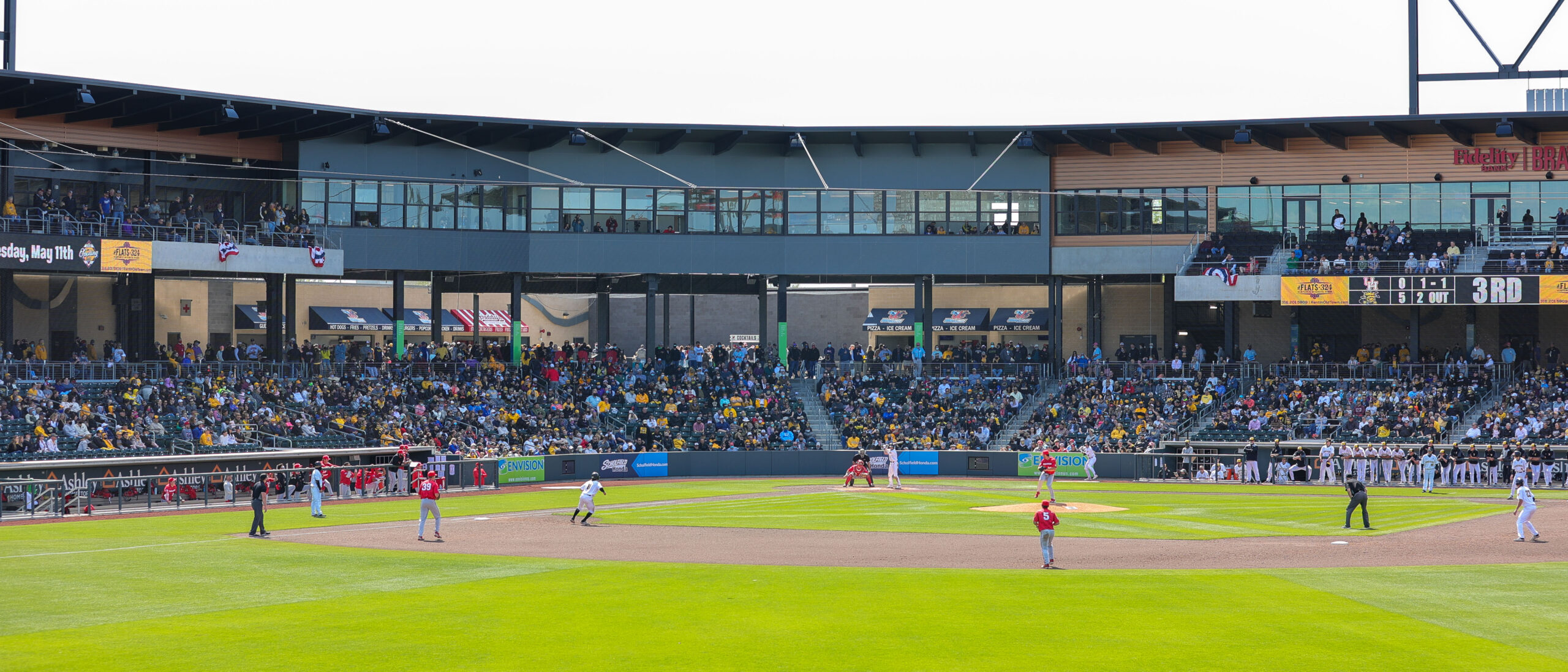History and memories and records are the stuff of baseball. And so it seems appropriate to introduce Wichita’s new Riverfront Stadium with a bit of each.
In April 1914, Chicago’s iconic Wrigley Field opened with a former Shocker pitching for the home team. He was Claude Hendrix, who had pitched for Fairmount College — precursor of Wichita State University — before signing a professional contract. Hendrix tossed a 9-1 victory over Kansas City.
Last month, almost exactly 107 years later, WSU freshman pitcher Jace Kaminska accomplished a similar feat, pitching the Shockers to a 9-1 win over Houston to open the $90 million Riverfront Stadium. And 7,507 cheering fans got the public’s first good look at a modern field of dreams after a one-year delay caused by the pandemic.
This fan’s view: Riverfront Stadium is a collection of fan-pleasing amenities designed to make the ball game fun and easy to watch.
Compared with most stadiums, new and old, Riverfront is spacious. Particularly in the cheaper seats, most major league stands are designed to squeeze as many bodies as possible into the smallest possible space. Upper decks often are as steep as a mountainside. The crowds that always seem to be on the move in ball parks parade in front of many rows of seats, shutting off the view of many fans.
Not so at Riverfront. The wide seats and aisles and the fact that the path to the concession stands is behind most chairs makes it easy to concentrate on the game. With innovations that range from a room reserved for mothers feeding their babies to a Wichita flag mown into the diamond’s grass, the park contrasts sharply with the one it replaced, Lawrence-Dumont.
If Wichita’s stadium lacks anything, it’s the aroma that goes with well-used stadiums. Even with modern cleaning and sanitizing, many parks retain a smell that goes with baseball. Spilled beer, dropped hot dogs and crushed peanut shells somehow permeate seats or are absorbed into pores in the concrete. It’s eau de baseball that reminds many people they really are in a ballpark.
My first experience with a minor league stadium came in Pueblo, Colo., in the 1940s. Pueblo was playing against Sioux City in a Western League game—a league that included Wichita. My memory of the game is hazy. But I vividly recall the mid-game brawl between the teams that broke up when Pueblo’s oversized catcher launched himself onto the pile of bodies at home plate. Survivors returned to their dugouts.
My first look at Lawrence-Dumont came in 1949, 14 years after it was built. Three friends and I rode a late-night train from western Oklahoma to watch the Elk City, Okla., team lose to the Golden, Colo., Coors team in the NBC tournament. That was an era of overflow crowds at the tournament. To me at the moment, it was a big-league experience.
Our family’s greatest major league moment came in 1976, the last summer the game was played in Municipal Stadium in Kansas City.
That park had an entrance off the parking lot that led into the left field corner. We were there to see Detroit, and the Tigers were taking batting practice when we arrived. Watching from the sidelines, a foul ball soon fell where our older son, then about 14, could field it. Then our daughter, a couple of years older, picked up another that landed near us. When Tiger outfielder Gates Brown saw our younger son still didn’t have a ball, he brought one to him.
As we left for our seats with the souvenirs in hand, Al Kaline, the Tigers’ Hall of Fame outfielder, passed through the stands en route to do a radio interview. He stopped, autographed the balls for the kids, then went on his way. Finally, when we sat down, Tiger manager and former Yankee star Billy Martin stopped on his way to the dugout to talk to them.
That game set a high standard for any that would follow.
But WSU’s game at Riverfront featured something even that game didn’t, for nearly every play could be considered some kind of stadium first. Paxton Wallace became the first batter to hit a home run in the new park. His was a two-run blow over the right center field fence with one on to give WSU an early 2-0 lead. Then in the fifth inning, Hunter Gibson did even better. He hit Riverfront’s first grand slam home run.
The park’s full-time tenants, the Wind Surge, open a home season May 11 versus the Springfield, Mo., Cardinals. Wichita is Minnesota’s AA affiliate. Springfield serves the same role for St. Louis.












